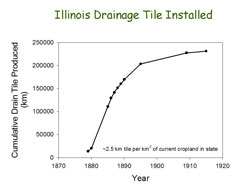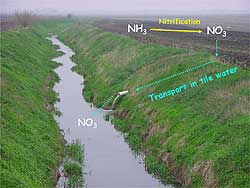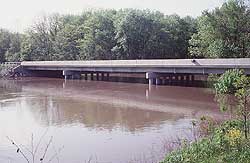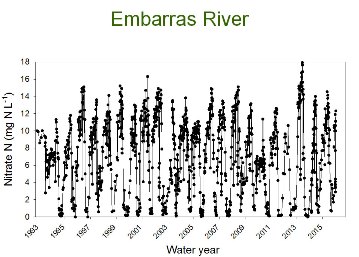Biogeochemistry
Laboratory
|
|
Agricultural Landscape Where We Work
Our group works in the agricultural landscape of the upper Midwest, which has not been well studied from a biogeochemical viewpoint. Until recently, past research in this landscape has focused on crop production with the emphasis on improving soils and drainage to benefit agriculture. Little attention was paid to the sustainability of this landscape, and on environmental impacts of this intensive agriculture. We examine all aspects of nutrient cycles in agriculturally dominated watersheds, including but not limiting our studies to crop production, soil nutrient cycling, leaching losses through tile drainage, and transport and impacts of nutrients in streams/rivers of Illinois. Because watersheds in our area export on average about 30 kg N/ha/yr as nitrate, we monitor rivers and put our results in the context of watersheds. Past work examined the fate and effects of nutrients such as N and P added to the aquatic system. Current projects focus on conservation practices that can be used to reduce nutrient losses, such as fertilizer management, cover crops, bioreactors, constructed wetlands, complex rotations, and drainage water management. The upper Midwest is the major source of N to the Mississippi River, a primary cause of hypoxia in the Gulf of Mexico. We need to continue to produce crops in this region, but must better understand nutrient biogeochemistry and use this knowledge to develop more sustainable production methods that minimize environmental impacts.
Last Updated February 1, 2016





